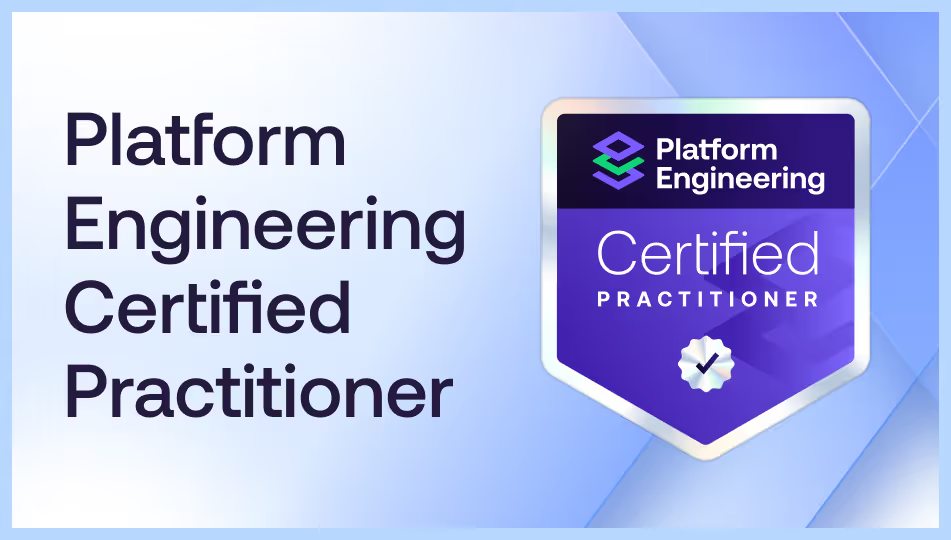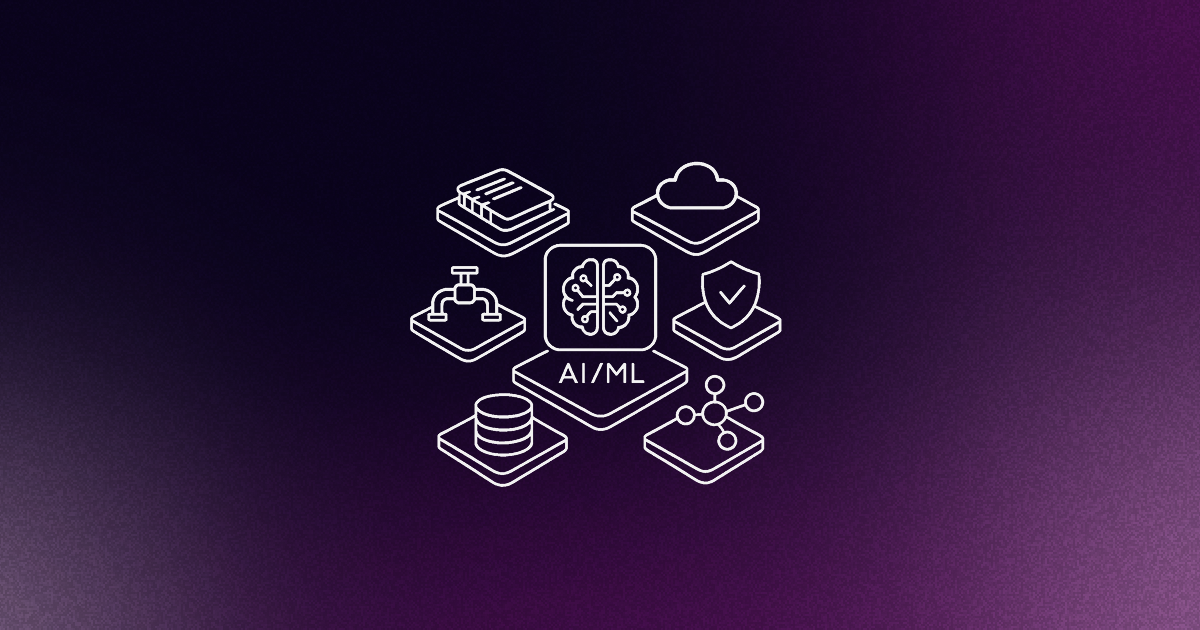Platform teams and development teams must work together effectively to deliver successful software products. Many organizations struggle with this collaboration, leading to platform initiatives that fail to gain adoption or create meaningful impact. The way these teams interact fundamentally shapes how technology, processes, and tools are adopted across an organization.
This article provides a strategic framework for platform engineers, engineering managers, and technical leaders who want to improve collaboration between platform and development teams in medium to large engineering organizations.
Why most platform teams fail at collaboration
Most platform initiatives fail because teams build in isolation, developing solutions without sufficient input from their intended users. They create what they think developers want instead of what developers actually want.
Platform teams often act like traditional IT departments - taking requests, building solutions, and handing them over. This approach creates friction because developers end up with tools that don't fit their workflows. The platform becomes another obstacle instead of an enabler.
The product mindset changes everything. When platform teams treat developers as customers and their platform as a product, collaboration becomes natural. You start asking the right questions: What problems do developers face daily? How can we make their work easier? What would make them choose our platform over building their own solution?
The Team Topologies framework explained
Team Topologies gives us a clear way to think about how platform teams interact with other teams. Created by Matthew Skelton and Manuel Pais, this framework defines four team types and shows how they work together effectively.
Stream-aligned teams focus on delivering features to customers. These are your typical development teams working on applications, services, or products. They own the full lifecycle of their software - from code to production.
Platform teams provide internal services that stream-aligned teams use to deliver their work faster. Think of them as the foundation that other teams build on. They handle common problems like deployment pipelines, monitoring, and infrastructure management.
The critical factor lies in how these teams interact effectively. Platform teams don't dictate what stream-aligned teams do. Instead, they provide capabilities that make developers' lives easier. When a development team needs to deploy code, the platform team has already built the tools to make that simple and reliable.
Setting up clear roles and responsibilities
Unclear role definitions significantly impede effective collaboration. When teams don't know who owns what, work slows down and frustration builds up. Clear boundaries prevent organizational dysfunction and workflow inefficiencies.
Platform teams own the shared infrastructure and tools. They build and maintain the systems that multiple development teams use. This includes deployment pipelines, monitoring systems, security controls, and developer portals.
Development teams own their applications and business logic. They decide what features to build, how to architect their services, and when to release updates. They use platform services but aren't required to follow every platform recommendation.
Key platform team roles
Different people on platform teams handle different aspects of collaboration:
- Platform product manager: Talks to developers, gathers feedback, and decides what to build next
- DevEx platform engineers: Focus specifically on making developers' daily work smoother
- Infrastructure platform engineers: Transform infrastructure into a self-service products
- Security platform engineers: Build security into platform services so developers don't have to worry about it
Developer advocates and liaisons
Some organizations create specific roles to bridge platform and development teams. Developer advocates represent their team's needs in platform discussions. They attend planning meetings, provide feedback on new features, and help their teammates adopt platform services.
This works especially well in larger organizations where platform teams cannot talk directly to every developer.
Building feedback loops that actually work
High-performing platform teams prioritize systematic collection and analysis of developer feedback. They don't just ask for it once - they create multiple ways for developers to share what's working and what isn't.
User interviews give you the deepest insights. Sit down with developers and watch them work. Ask about their daily frustrations. You'll discover previously unknown problems.
Developer surveys help you gather feedback from more people quickly. Keep them short and focused on specific questions. "How satisfied are you with deployment speed?" works better than "How do you feel about the platform?"
Usage data tells you what developers actually do versus what they say they do. When reported satisfaction with a feature doesn't correlate with actual usage metrics, this indicates a disconnect between perceived and actual value.
Interactive collaboration methods
Some of the most successful platform teams run regular hackathons with development teams. These events let everyone work together on real problems. Developers get to influence platform direction, and platform engineers see their tools being used in practice.
Cross-functional improvement teams work well for ongoing collaboration. Mix platform engineers with developers to tackle specific challenges like reducing deployment time or improving testing workflows.
Understanding the developer journey
Chevron's platform team uses something called "collaborative user context mapping." They work directly with developers to understand their daily workflows using the same language developers use.
This approach keeps developers at the center of every platform decision. Instead of guessing what developers want, you map out their actual journey from writing code to deploying it.
Start by observing real workflows. Shadow developers for a day. Watch how they write, test, and deploy code. Note where they get stuck or frustrated. These friction points become your improvement targets.
Map the entire development lifecycle. Document every step from initial idea to production deployment. Include handoffs between teams, waiting periods, and manual processes. This complete picture shows you where platform services can add the most value.
Look for patterns across teams. If multiple development teams struggle with the same problems, those become high-priority platform features.
Creating golden paths with developer input
Golden paths are your recommended ways of doing common tasks. They're not rigid rules - they're well-tested approaches that work for most situations.
The key is involving developers in creating these paths. Don't build them in isolation and then expect adoption. Instead, work with development teams to design workflows that actually fit how they work.
The 80/20 approach (designing for 80% of common use cases) works well here. Design your golden paths to handle 80% of common use cases effectively. Accept that some teams will have unique needs that require different approaches. This balance gives you consistency without creating unnecessary constraints.
Multiple interfaces for different preferences
Developers work in different ways. Some prefer command-line tools, others like graphical interfaces, and many want API access for automation.
Effective platform teams support multiple interfaces that all connect to the same underlying services. A developer can use whatever interface fits their workflow, but the results are consistent across all options.
This flexibility increases adoption because developers don't have to change their existing habits to benefit from platform services.
Measuring collaboration success
Measurement is essential for improvement. Successful platform teams track both technical metrics and developer satisfaction.
Developer satisfaction scores tell you if collaboration is working. Regular surveys asking developers how likely they are to recommend the platform give you a clear signal. High scores usually mean good collaboration, low scores indicate problems.
Platform usage metrics show adoption patterns. Track how many teams use different platform services, how often they use them, and where they encounter problems. This data guides your improvement priorities.
Response time to developer feedback measures how well you collaborate day-to-day. When developers report issues or request features, how quickly do you respond? Fast response times build trust and encourage more feedback.
Leading and lagging indicators
Leading indicators predict future success. These include things like developer participation in platform planning sessions, feedback volume, and early adoption of new features.
Lagging indicators show the results of your collaboration efforts. Deployment frequency, change failure rates, and time to resolve issues reflect the cumulative impact of good platform-development team collaboration.
Common collaboration pitfalls and solutions
Mandated platform adoption significantly reduces collaborative engagement and voluntary adoption. When organizations force developers to use platform services without their input, resistance is inevitable. Developers find workarounds or simply ignore the platform entirely.
Instead, focus on making platform services so useful that developers choose to adopt them. This requires understanding developer pain points and building solutions that clearly address those problems.
Competing priorities create friction. Platform teams often focus on long-term stability and consistency while development teams prioritize rapid feature delivery. These different timelines can clash.
Regular joint planning sessions help align priorities. When both teams understand each other's constraints and goals, they can find solutions that work for everyone.
Building internal advocates
The most successful platform adoptions happen when developers become advocates for the platform. These champions promote platform services to their peers and provide honest feedback about what's working.
Developer advocacy cannot be mandated; it emerges organically when platform services demonstrably address real developer pain points. Focus on delivering real value, and advocates will appear.
Scaling collaboration as you grow
What works for small teams often breaks down as organizations grow, requiring different approaches at various maturity levels. Direct ad-hoc communication becomes impossible when you have dozens of development teams.
Developer liaisons help scale communication. Instead of platform teams trying to talk to every developer, they work with representatives from each development team. These liaisons gather feedback from their teams and communicate platform updates back.
Self-service capabilities reduce the collaboration overhead. When developers can provision resources, deploy applications, and troubleshoot issues without platform team involvement, both teams can focus on higher-value work.
Documentation and training become critical at scale. You cannot personally onboard every new developer, so comprehensive guides and training materials handle much of the education workload.
Getting started with better collaboration
Begin by talking to developers in your organization. Ask about their daily frustrations and workflow bottlenecks. This conversation gives you concrete problems to solve rather than abstract platform features to build.
Form a small cross-functional team with both platform and development engineers. Pick one specific problem that affects multiple development teams and work together to solve it. This focused approach builds collaboration skills while delivering tangible value.
Track both technical metrics and developer satisfaction from the beginning. You want to know if your collaboration efforts are actually improving developers' work experience.
Remember that collaboration is a skill that improves with practice. Start with simple, low-stakes interactions and build up to more complex joint initiatives as teams learn to work together effectively.
Join the Platform Engineering community and connect with peers who are tackling similar collaboration challenges and don't forget to check our Platform Engineering Certified Practitioner course. Learning from others' experiences accelerates your own progress.
Frequently asked questions about platform-development team collaboration
How do platform teams avoid becoming just another help desk for developers?
Platform teams avoid the help desk trap by focusing on building self-service capabilities rather than handling individual requests. They create tools and documentation that let developers solve problems independently, only stepping in for complex issues or platform improvements.
What happens when development teams resist using platform services?
Resistance usually indicates that platform services don't solve real developer problems or create additional friction. The solution involves talking directly to resistant teams to understand their concerns and adapting platform services based on their feedback.
How many developers can one platform team effectively support?
The ratio depends on platform maturity and self-service capabilities, but most successful platform teams support between 50-200 developers. Teams supporting more developers typically rely heavily on automation, documentation, and developer advocates.
What collaboration methods work best for remote and distributed teams?
Remote collaboration relies more on written communication, recorded demos, and asynchronous feedback collection. Regular video calls for planning and problem-solving sessions help maintain personal connections that make collaboration smoother.
How do platform teams prioritize conflicting requests from different development teams?
Successful platform teams use data-driven prioritization based on impact and effort. They consider how many developers a feature affects, how much time it saves, and how it aligns with organizational goals rather than just responding to the loudest requests.













